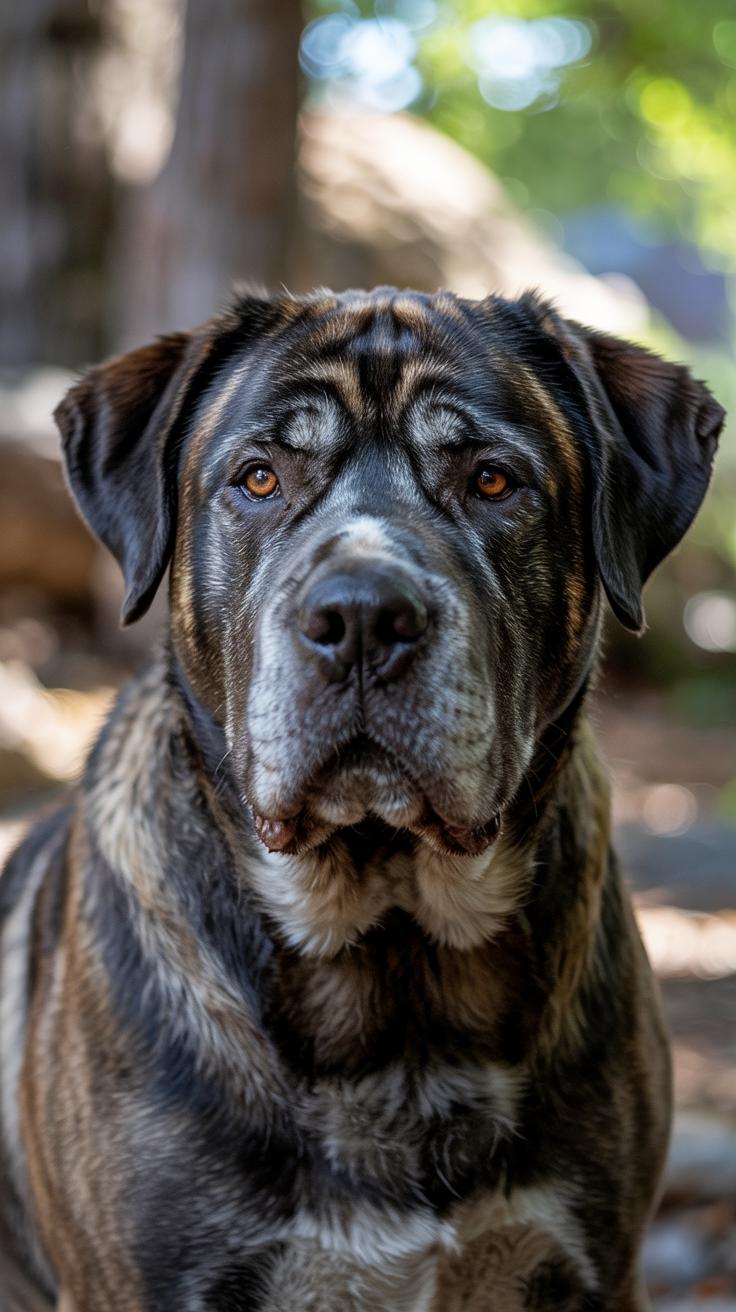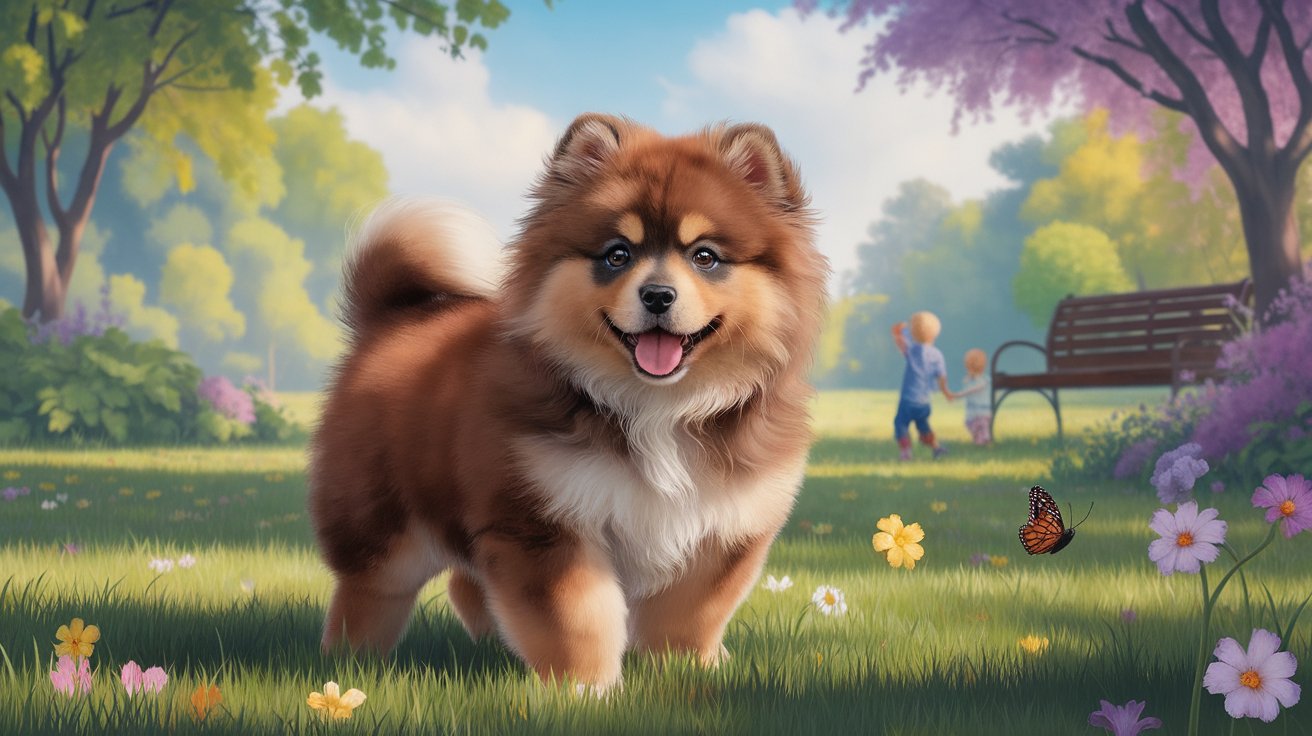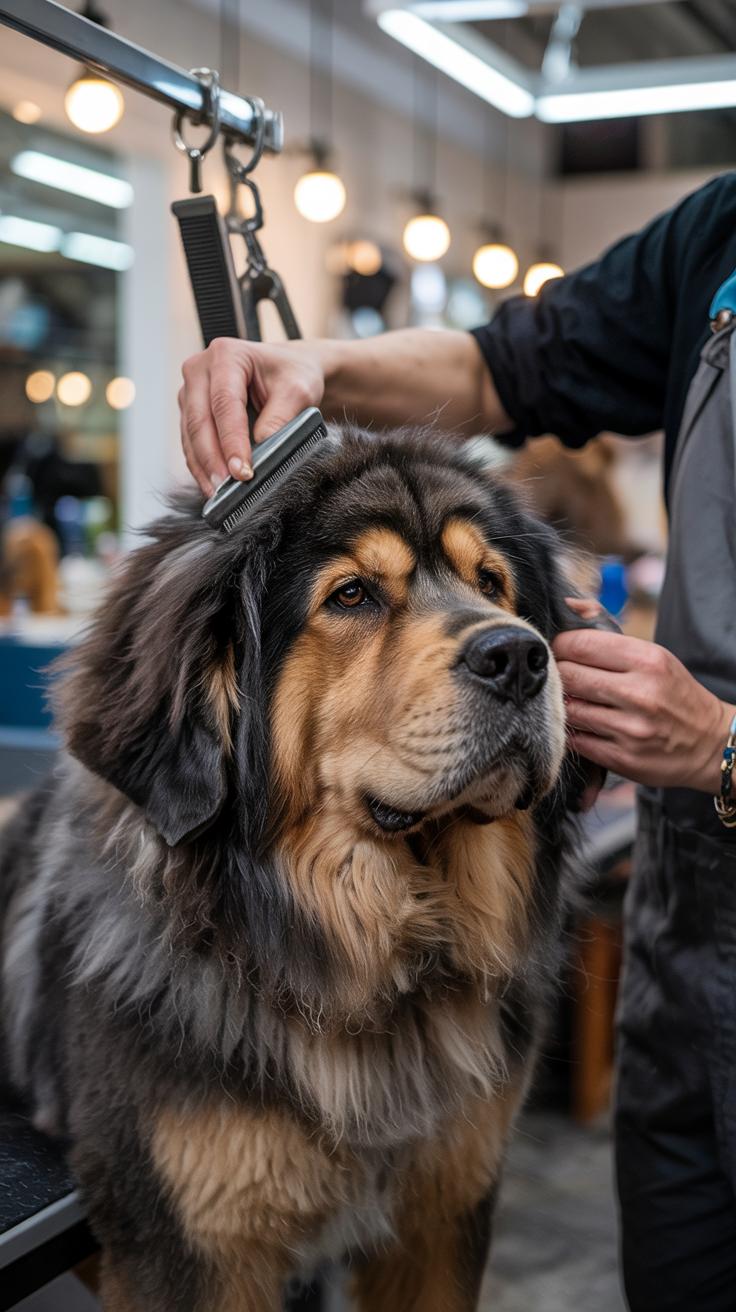Introduction
The Tibetan Mastiff, known for its imposing stature and soulful eyes, is more than just a pet; it’s a majestic companion steeped in history and tradition. Originating from the harsh mountainous terrains of Tibet, this breed has been a guardian, protector, and beloved family member for centuries. As one of the most revered breeds, the Tibetan Mastiff possesses unique qualities that make it an extraordinary addition to any household, especially for those who are passionate about dogs.
In this article, we will uncover the secrets of the Tibetan Mastiff, providing in-depth insights into its care, training, and the emotional bond it forms with its owners. From understanding the characteristics that define this remarkable breed to the essential training techniques that ensure a harmonious relationship, we aim to equip you with the knowledge needed to not only own a Tibetan Mastiff but to truly appreciate and nurture this incredible dog.
The Rich History of the Tibetan Mastiff Unveiling the Guardian Dogs Origins
A Dog of Majesty and Purpose
The Tibetan Mastiff boasts a history that stretches back thousands of years, deeply intertwined with the cultural fabric of Tibet. Originating from the Tibetan plateau, this breed was primarily developed by nomadic cultures to protect livestock from predators such as wolves and leopards. Their remarkable size and strength made them the perfect guardians, instilling a sense of safety in their human companions. These majestic dogs fulfilled not only a practical role but also symbolized loyalty and bravery in Tibetan society.
Guardians of Tradition
In Tibetan culture, the Mastiff is more than just a working dog; it is a revered companion and a sign of wealth and status. Traditionally, these dogs are known to live in communal settings, accompanying monks and shepherds alike, further solidifying their status as protectors. Their presence in festivals and folklore highlights their integral role within local communities, embodying the harmony between humans and nature. Thus, the Tibetan Mastiff remains a timeless symbol of strength and fidelity in Tibetan culture.
Understanding the Physical Characteristics of the Tibetan Mastiff
Size and Build
The Tibetan Mastiff is a magnificent breed known for its impressive size and strong build. Adult males typically weigh between 90 to 150 pounds, while females range from 70 to 120 pounds. Standing about 24 to 30 inches tall at the shoulder, these dogs exude a powerful yet balanced physique, characterized by a broad head, deep chest, and well-muscled limbs. This robust construction offers not only an imposing presence but also the agility required for a guardian dog.
Coat Types and Coloration
An important aspect of the Tibetan Mastiff’s allure is its stunning coat, which serves as protection against harsh weather conditions. The breed features a dense double coat that can be either straight or wavy, with the outer coat being coarse and waterproof. Color variations include black, brown, blue, and gold, often accompanied by markings of tan or white. This impressive fur not only highlights their majestic appearance but also requires diligent grooming to maintain its health and luster, making ownership an engaging experience for passionate pet owners.
Temperament and Behavior Traits Understanding Tibetan Mastiffs Interactions and Protective Instincts
Family Dynamics and Behavior
Tibetan Mastiffs exhibit a unique temperament characterized by loyalty, independence, and a protective nature. These dogs form strong bonds with their families, often viewing themselves as guardians. Their affectionate demeanor is evident in their interactions, as they can be playful and gentle with children. However, this breed does require socialization from a young age to ensure they become well-adjusted adults. Proper introductions to new people and situations will help curtail any overly cautious or aggressive reactions they may exhibit.
Protective Instincts
The protective instincts of Tibetan Mastiffs are legendary. Historically bred to guard livestock in the harsh Himalayan terrain, they possess an innate sense of vigilance towards perceived threats. This breed is known for its deep bark and trademark stance, both serving as deterrents to intruders. While their protective nature makes them excellent watchdogs, it can lead to wariness of strangers if not properly managed. Owners should strike a balance between nurturing their protective instincts and encouraging openness to new experiences to prevent overly defensive behavior.
Training Your Tibetan Mastiff Tailoring Methods to Their Unique Temperament
Understanding Their Nature
Training a Tibetan Mastiff requires insight into their unique temperament. Known for their independent spirit, these dogs often display stubbornness, making traditional training techniques less effective. Establishing yourself as a calm and assertive leader is vital. Consistency in commands and boundaries will help your Mastiff understand expectations. Using positive reinforcement, such as treats or praise, can be particularly effective, as Tibetan Mastiffs respond well to encouragement rather than harsh corrections.
Effective Training Techniques
Consider engaging in early socialization to expose your Tibetan Mastiff to various environments, people, and other animals. This practice aids in developing their confidence and reducing protective instincts. Obedience training should start at an early age, focusing on basic commands like “sit,” “stay,” and “come.” Incorporating short training sessions will keep them mentally stimulated and prevent boredom. Additionally, utilizing activities that align with their natural instincts, such as herding or agility exercises, can foster a positive training experience.
Nutritional Needs of the Tibetan Mastiff Ensuring Optimal Health and Wellbeing
Understanding Dietary Requirements
Providing the right nutrition for a Tibetan Mastiff requires a comprehensive understanding of their dietary needs. This large and powerful breed necessitates a high-quality, protein-rich diet to support their muscular build and high energy levels. A balanced blend of animal proteins, such as chicken, beef, or fish, ensures they receive essential amino acids for muscle health. Whole grains, like brown rice, can serve as good carbohydrates, offering energy for their active lifestyle.
Key Nutritional Components
Fats also play a crucial role in a Tibetan Mastiff’s diet, delivering needed energy and promoting a healthy coat. Look for sources rich in omega fatty acids, such as fish oil or flaxseed. Vitamins and minerals must not be overlooked, contributing to overall health and immunity. Supplements may be beneficial, particularly for older dogs, but consulting a veterinarian before introducing any new diet is advised. Ultimately, creating a feeding plan tailored to their specific age, size, and activity level will foster a long, healthy life for your Tibetan Mastiff.
Health Considerations for Owners Common Health Issues and Preventive Measures for Tibetan Mastiffs
Tibetan Mastiffs are majestic dogs, but like all breeds, they are susceptible to specific health problems. Hip dysplasia, a genetic condition affecting the hip joint, is particularly common in larger breeds. Keeping your Mastiff’s weight manageable and ensuring they engage in low-impact exercise can alleviate strain on their joints.
Another concern is thyroid issues, often leading to weight gain and lethargy. Annual vet check-ups that include blood tests for thyroid function are recommended for early detection. Skin conditions, such as hot spots and allergies, may also occur, necessitating a focus on proper nutrition and routine grooming to minimize irritants.
Owners should remain vigilant about any signs of distress and maintain regular veterinarian visits to ensure their Tibetan Mastiff enjoys a long, healthy life. Being proactive can make a significant difference in the overall well-being of these remarkable companions.
Grooming Requirements and Care for Tibetan Mastiffs
Coat Maintenance: A Focus on the Tibetan Mastiff
The majestic coat of a Tibetan Mastiff requires dedicated attention to keep it healthy and lustrous. Regular brushing is necessary to manage shedding and prevent matting, especially during seasonal changes when their undercoat sheds most heavily. Aim for at least once a week, using a slicker brush or an undercoat rake to effectively reach their dense fur. Bathing should be done sparingly—perhaps once every few months or when they get particularly dirty, as over-bathing can strip natural oils and irritate the skin.
Hygiene Practices for a Healthy Companion
Hygiene is essential in maintaining the overall health of your Tibetan Mastiff. Regular ear cleaning helps prevent infections due to their droopy ears. Check for wax buildup and odor, cleaning gently with a vet-recommended solution. Dental care should not be overlooked; brushing their teeth multiple times a week is advisable, along with providing dental chews. Nail trimming should be routinely scheduled to avoid painful overgrowth. These grooming practices not only contribute to their well-being but also strengthen the bond between owner and dog, ensuring a happy, healthy life together.
The Tibetan Mastiff in Modern Society Adaptability as Family Pets
The Role of Tibetan Mastiffs in Contemporary Homes
In today’s society, Tibetan Mastiffs have emerged as unique companions, showcasing their adaptability beyond their traditional guarding roles. Families are increasingly drawn to their noble appearance and protective instincts, making them favorable choices for home environments. These majestic canines possess a steadfast loyalty that fosters a welcoming atmosphere, often forming strong bonds with family members, especially children.
Integrating Tibetan Mastiffs into Family Life
Bringing a Tibetan Mastiff into a modern household requires a nuanced approach to training and socialization. These dogs thrive on structure and respond positively to consistent, firm guidance. They are intelligent and independent, allowing them to adapt to various living scenarios, whether in spacious rural areas or compact urban settings. However, potential owners must recognize that their size and strength necessitate responsible ownership, ensuring a harmonious balance between the dog’s natural instincts and family dynamics.
Building a Lasting Bond with Your Tibetan Mastiff Emotional Connection and Responsibilities
Creating a Strong Emotional Connection
Developing a bond with your Tibetan Mastiff involves understanding their unique personality and behaviors. Known for their loyalty and protective nature, these dogs require consistent interaction and attention. Spend quality time engaging in mutual activities like walks, playtime, and training sessions to nurture this relationship. A Tibetan Mastiff often thrives on affection and companionship, making it essential for you to invest time in truly understanding their needs and emotions. Be patient; they may not always show affection in overt ways, but their loyalty will grow as trust between you deepens.
Recognizing Responsibilities as an Owner
Owning a Tibetan Mastiff encompasses more than just the joys of companionship. These magnificent dogs require proper training, socialization, and physical exercise to flourish. Taking on this responsibility means consistently providing mental stimulation and ensuring a structured routine. Their strong-willed nature may lead to challenging moments, but guidance can transform these into opportunities for growth. Furthermore, maintaining their health involves regular vet check-ups, a balanced diet, and appropriate grooming. Embrace these responsibilities to foster a deep, lasting connection that enhances both your lives.
Conclusions
The Tibetan Mastiff is not merely a dog; it is a loyal guardian and a devoted companion that enriches the lives of those fortunate enough to share their home with one. Understanding its breed traits, temperament, and needs is crucial for any potential owner. With careful training and socialization, the Tibetan Mastiff can thrive, exhibiting both its protective instincts and affectionate nature.
As you embark on this rewarding journey with your Tibetan Mastiff, remember that patience, dedication, and love will foster a bond that lasts a lifetime. Embrace the challenges and joys that come with this majestic breed, and your efforts will surely be rewarded with countless cherished moments and memories.
















